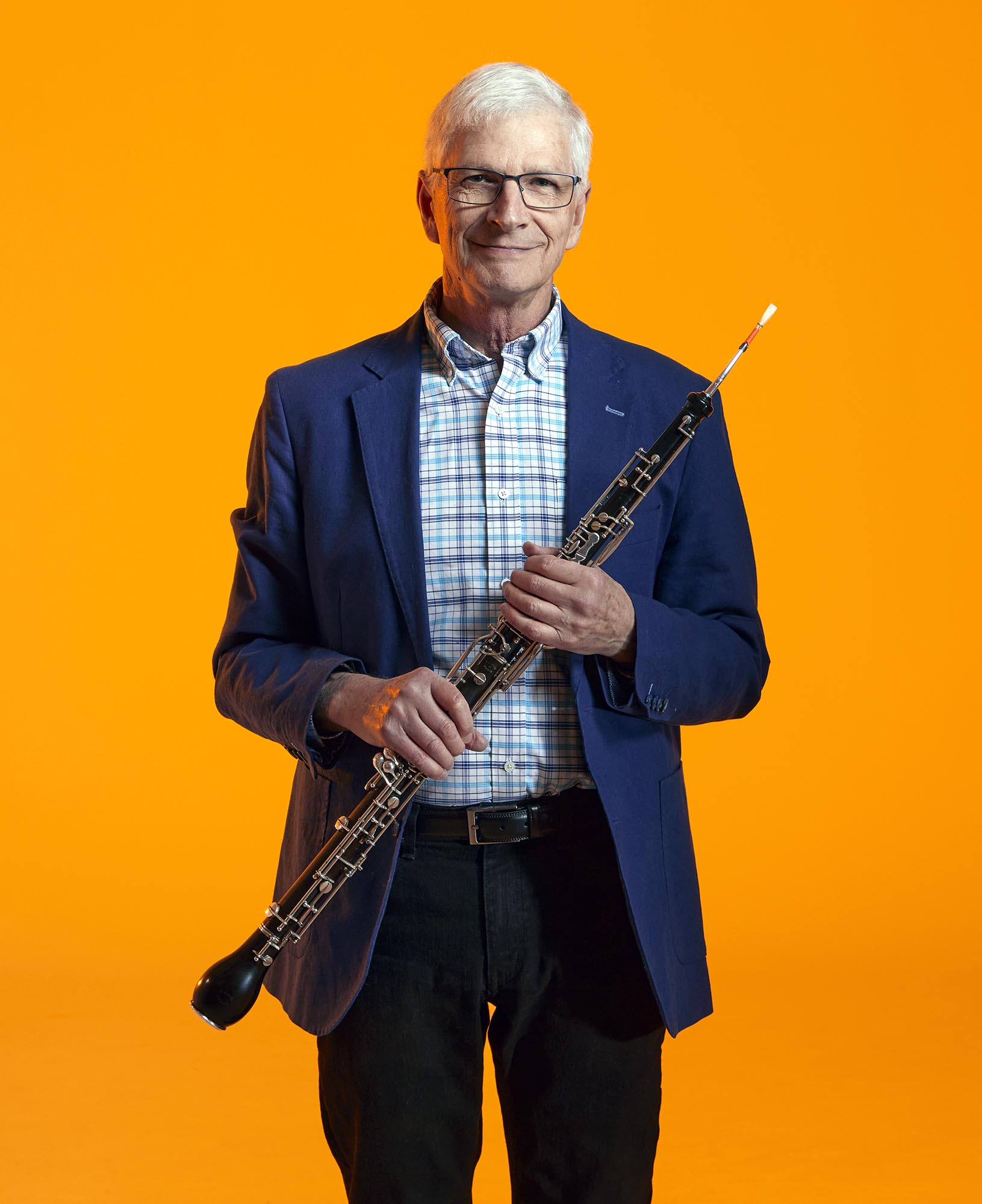by David Sussman, Assistant Principal Oboe
 One of my earliest memories of playing in an orchestra was the sheer thrill of participating in something larger than just me. Dozens of players were taking these notes written on a page and together we were creating a work of art in real time. It seemed like magic.
One of my earliest memories of playing in an orchestra was the sheer thrill of participating in something larger than just me. Dozens of players were taking these notes written on a page and together we were creating a work of art in real time. It seemed like magic.
Collaboration is central to being an orchestral musician. We must all be going at the same pace, in tune, and in balance, while shaping musical lines with like-minded intent.
How do we do this?
Once an initial pace is established (usually by the conductor) we each must maintain that speed and ensure that our musical parts fit in rhythmically with each other. We must listen carefully at all times to be together. It is trickier when we must respond uniformly to a speed-up or slow-down.
During the pandemic, many of us participated in virtual performances where we recorded our parts individually and then put them together. It was impossible to be perfectly together because we could not hear any of the other players to match up with. The sound engineers tried to synch it up (with surprising success!).
Even something as seemingly simple as starting a note at the same time can be a challenge when 66 people are doing it. We all try to respond to a conductor’s beat as an orchestra. If in doubt, we make sure we are with our section leader or the concertmaster. Most orchestras play a little ‘behind’ the beat. Rather than playing when the baton is at the lowest point in a downbeat, we play when it is coming back up. This allows more time to respond to speed-ups or slow-downs. Conductors differ on how far behind the beat they like an orchestra to play, but we, as a group, have developed a default response.
We must end notes together, with the same shortness or fullness, too. String players must all move their bows up or down at the same time. This requires immense concentration (and sometimes a bit of extra sensory perception!).
Although we tune before performing a piece, we must listen carefully to stay perfectly in pitch. We must know which note in a chord we are playing, what other instruments are playing that same note, and then match them.
We must know if we are playing the main melody, a counter melody, harmony or a rhythmic underpinning, and play the appropriate loudness to provide the right balance (the conductor standing at the front is very helpful in ensuring this happens).
The musical interpretation must be collaborative too. I may have a preferred way of playing a melody, but if the choice (usually by the conductor) is to play it a different way, it is my job to play it the new way and make it as beautiful as possible. If a melody is passed around from instrument to instrument, we try to each play it with the same character and style.
Somehow, when we are concentrating so intently and ‘in the zone’, this great beauty and art emerges.
After more than four decades of playing with the Calgary Phil, I still feel the magic I encountered early on. It is a visceral thrill to be in the midst of an orchestra, hearing my talented and artistic colleagues inspiring me to match them to collectively bring you great music.
